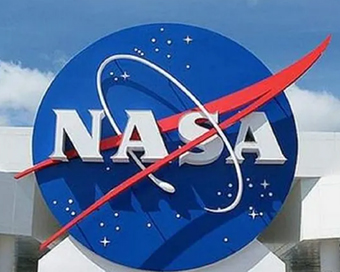Gallery
 PM Modi visit USA
PM Modi visit USA Only the mirror in my washroom and phone gallery see the crazy me : Sara Khan
Only the mirror in my washroom and phone gallery see the crazy me : Sara Khan Karnataka rain fury: Photos of flooded streets, uprooted trees
Karnataka rain fury: Photos of flooded streets, uprooted trees Cannes 2022: Deepika Padukone stuns at the French Riviera in Sabyasachi outfit
Cannes 2022: Deepika Padukone stuns at the French Riviera in Sabyasachi outfit Ranbir Kapoor And Alia Bhatt's Wedding Pics - Sealed With A Kiss
Ranbir Kapoor And Alia Bhatt's Wedding Pics - Sealed With A Kiss Oscars 2022: Every Academy Award Winner
Oscars 2022: Every Academy Award Winner Shane Warne (1969-2022): Australian cricket legend's life in pictures
Shane Warne (1969-2022): Australian cricket legend's life in pictures Photos: What Russia's invasion of Ukraine looks like on the ground
Photos: What Russia's invasion of Ukraine looks like on the ground Lata Mangeshkar (1929-2022): A pictorial tribute to the 'Nightingale of India'
Lata Mangeshkar (1929-2022): A pictorial tribute to the 'Nightingale of India' PM Modi unveils 216-feet tall Statue of Equality in Hyderabad (PHOTOS)
PM Modi unveils 216-feet tall Statue of Equality in Hyderabad (PHOTOS)The Badminton Association of India (BAI) has announced a 14-member-strong India squad for
- Men’s Sr Hockey Nationals to be played in division-based format from April 4
- Mensik denies Djokovic 100th title in Miami final
- KIPG: Son of a vegetable vendor, Bihar’s Jhandu Kumar eyes Worlds, 2028 Paralympics
- Hardik Singh credits hard work and team unity for receiving HI Midfielder of the Year award
- Djokovic, Alcaraz land in same half of Miami draw
2021 6th hottest year, last 8 years the warmest: NASA Last Updated : 14 Jan 2022 11:39:30 AM IST 
Earth's global average surface temperature in 2021 tied 2018 as the sixth warmest year on record, and the past eight years are the warmest, according to an independent analysis done by NASA and the National Oceanic and Atmospheric Administration (NOAA), USA.
Continuing the planet's long-term warming trend, Global temperatures in 2021 were 0.85 degrees Celsius above the average for NASA's baseline period, according to scientists at NASA's Goddard Institute for Space Studies (GISS) in New York. NASA uses the period from 1951-1980 as a baseline to see how global temperature changes over time."Collectively, the past eight years are the warmest years since modern recordkeeping began in 1880. This annual temperature data makes up the global temperature record -- which tells scientists the planet is warming," a NASA release said.According to NASA's temperature record, Earth in 2021 was about 1.1 degrees Celsius warmer than the late 19th century average, the start of the industrial revolution."Science leaves no room for doubt: Climate change is the existential threat of our time," said NASA Administrator Bill Nelson. "Eight of the top 10 warmest years on our planet occurred in the last decade, an indisputable fact that underscores the need for bold action to safeguard the future of our country - and all of humanity."This warming trend around the globe is due to human activities that have increased emissions of carbon dioxide and other greenhouse gases into the atmosphere. The planet is already seeing the effects of global warming: Arctic sea ice is declining, sea levels are rising, wildfires are becoming more severe and animal migration patterns are shifting. Understanding how the planet is changing -- and how rapidly that change occurs is crucial for humanity to prepare for and adapt to a warmer world.Weather stations, ships, and ocean buoys around the globe record the temperature at Earth's surface throughout the year. These ground-based measurements of surface temperature are validated with satellite data from the Atmospheric Infrared Sounder (AIRS) on NASA's Aqua satellite.Scientists analysed these measurements using computer algorithms to deal with uncertainties in the data and quality control to calculate the global average surface temperature difference for every year.NASA compares the global mean temperature to its baseline period of 1951-1980. That baseline includes climate patterns and unusually hot or cold years due to other factors, ensuring that it encompasses natural variations in Earth's temperature.Many factors affect the average temperature any given year, such as La Nina and El Nino climate patterns in the tropical Pacific. For example, 2021 was a La Nina year and NASA scientists estimate that it may have cooled global temperatures by about 0.03 degrees Celsius from what the average would have been.A separate, independent analysis by NOAA also concluded that the global surface temperature for 2021 was the sixth highest since record keeping began in 1880. NOAA scientists use much of the same raw temperature data in their analysis and have a different baseline period (1901-2000) and methodology, the release said."The complexity of the various analysis does not matter because the signals are so strong," said director of GISS, NASA's leading centre for climate modelling and climate change research, Gavin Schmidt. "The trends are all the same because the trends are so large."Earlier on January 11, according to the annual findings released by the European Union's Copernicus Climate Change Service (C3S), the last seven years were the seven warmest on record worldwide.The findings showed that 2021 was the fifth warmest, followed closely by 2015 and 2018. The annual average temperature was 0.3 degrees Celsius above the temperature of the 1991-2020 reference period, and 1.1-1.2 degrees Celsius above the pre-industrial level of 1850-1900, the C3S data had shown.IANS New York For Latest Updates Please-
Join us on
Follow us on








172.31.16.186







